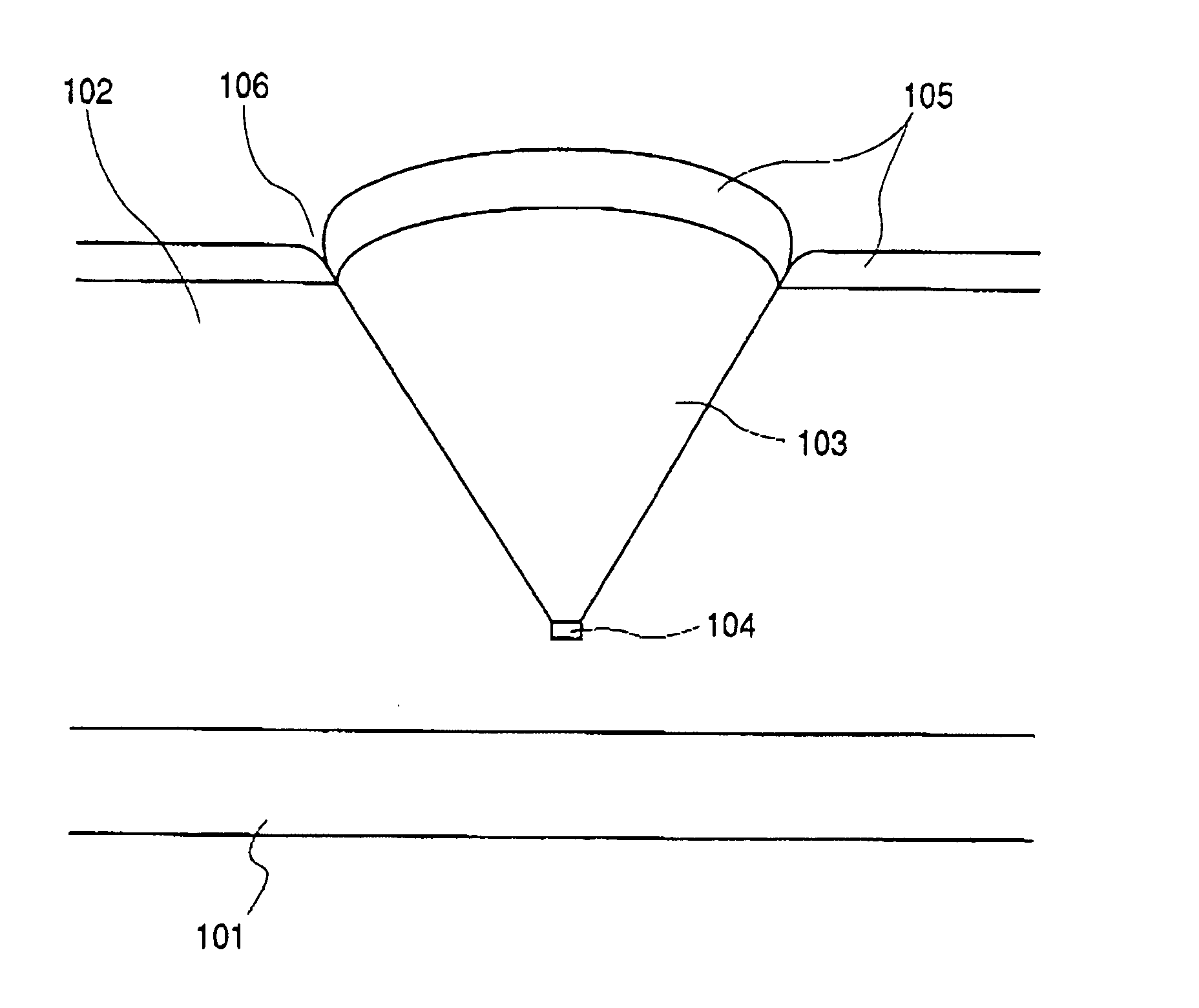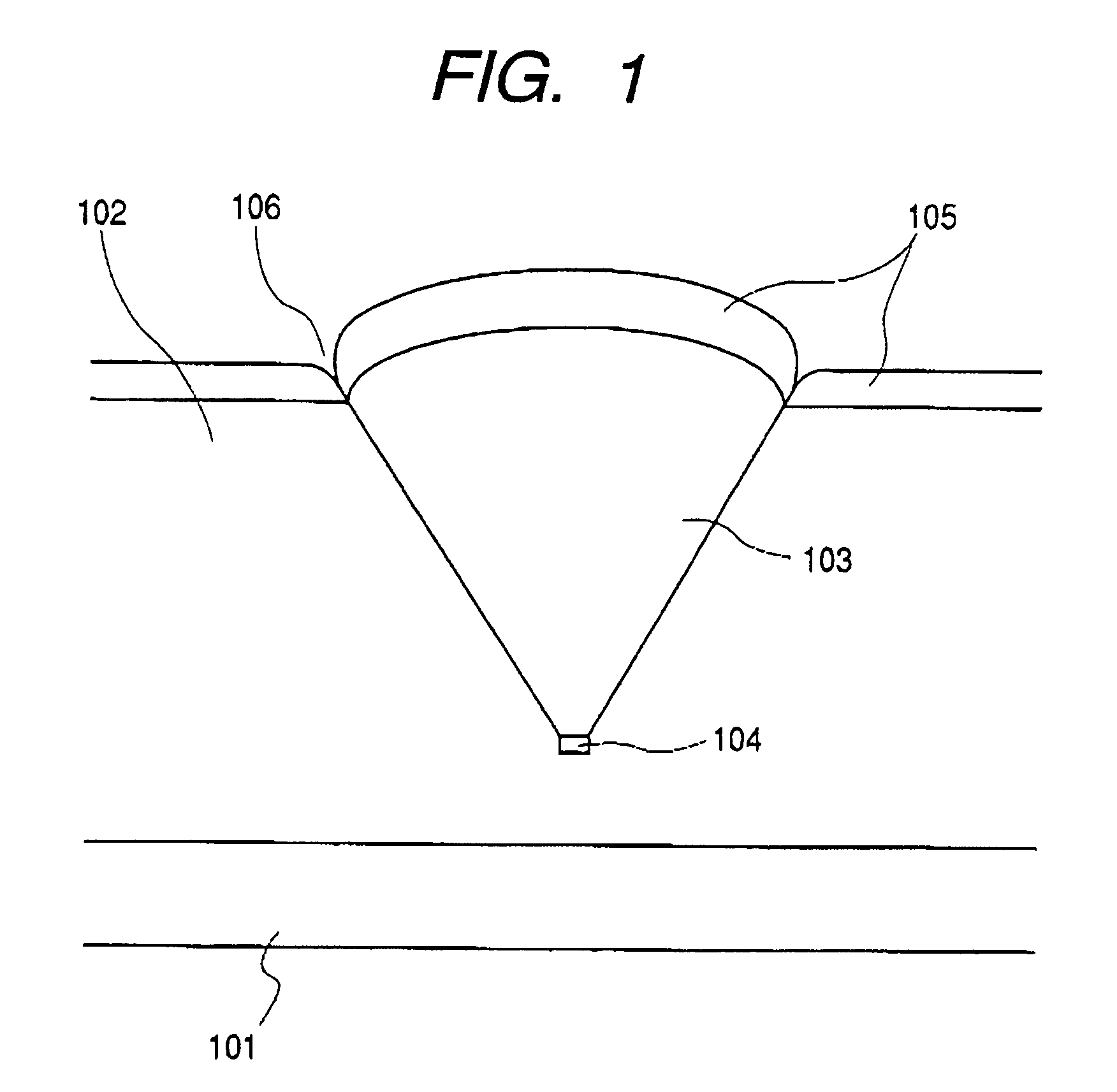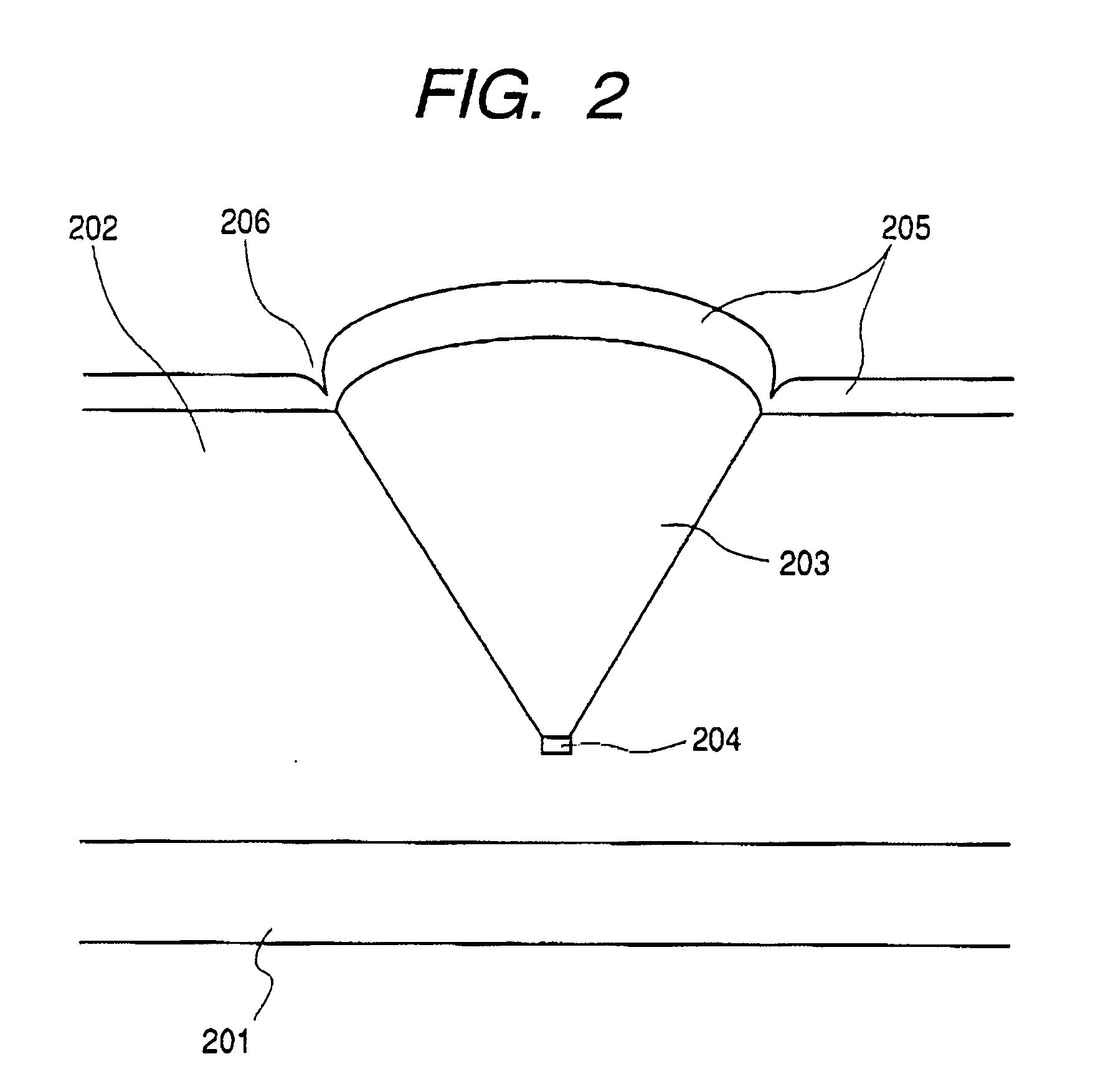Process for producing electrophotographic photosensitive member, and electrophotographic photosensitive member and electrophotographic apparatus making use of the same
a technology of electrophotography and photosensitive parts, which is applied in the direction of electrographic process equipment, optics, instruments, etc., can solve the problems of difficult to obtain in a high yield deposited film that has uniform film quality, poor image treatment, and defects called “dots” are subjected to severer standards. , to achieve the effect of high deposition rate, low deposition rate and superior film quality uniformity
- Summary
- Abstract
- Description
- Claims
- Application Information
AI Technical Summary
Benefits of technology
Problems solved by technology
Method used
Image
Examples
examples
[0223] The present invention is described below by giving Examples and Comparative Examples. The present invention is by no means limited by these.
example a-1
[0224] Using the a-Si photosensitive member film formation apparatus (first film-forming chamber) shown in FIG. 6, a photoconductive layer was deposited as the first layer on each cylindrical aluminum substrate of 108 mm in diameter under conditions shown in Table A-1.
TABLE A-1Photoconductive layerSource gas and flow rate:SiH4 [ml / min(normal)]200H2 [ml / min(normal)]400Substrate temperature:(° C.)240Reactor internal pressure:(Pa)0.7High-frequency power:(W)500Layer thickness:(μm)25
normal: volume in standard condition
[0225] Next, each substrate on which the first layer was formed was moved to the second film-forming chamber shown in FIG. 5, in a vacuum state by using a transport chamber, and as the second layer an upper-part blocking layer and a surface layer were deposited on the first layer under conditions shown in Table A-2.
TABLE A-2Upper-partblockingSurfacelayerlayerSource gas and flow rate:SiH4 [ml / min(normal)]20050B2H6 (ppm) (based on SiH4)1,000—CH4 [ml / min(normal)]200500Sub...
example a-2
[0269] Using the first film-forming chamber shown in FIG. 6, layers up to a photoconductive layer were deposited as the first layer on each cylindrical aluminum substrate of 108 mm in diameter under conditions shown in Table A-6.
TABLE A-6Lower-partPhotocon-blockingductivelayerlayerSource gas and flow rate:SiH4 [ml / min(normal)]150150H2 [ml / min(normal)]150150B2H4 (ppm) (based on SiH4)5000.3NO [ml / min(normal)]10—Substrate temperature:(° C.)200200Reactor internal pressure:(Pa)0.80.8High-frequency power:(W)300300Layer thickness:(μm)330
[0270] Next, in that state, each substrate on which the first layer was formed was moved to the second film-forming chamber shown in FIG. 5, in a vacuum state by using a transport chamber, and as the second layer an upper-part blocking layer was deposited on the first layer under conditions shown in Table A-7.
TABLE A-7Upper-part blocking layerSource gas and flow rate:SiH4 [ml / min(normal)]200PH3 (ppm) (based on SiH4)1,000CH4 [ml / min(normal)]200Substrate ...
PUM
 Login to View More
Login to View More Abstract
Description
Claims
Application Information
 Login to View More
Login to View More - R&D
- Intellectual Property
- Life Sciences
- Materials
- Tech Scout
- Unparalleled Data Quality
- Higher Quality Content
- 60% Fewer Hallucinations
Browse by: Latest US Patents, China's latest patents, Technical Efficacy Thesaurus, Application Domain, Technology Topic, Popular Technical Reports.
© 2025 PatSnap. All rights reserved.Legal|Privacy policy|Modern Slavery Act Transparency Statement|Sitemap|About US| Contact US: help@patsnap.com



